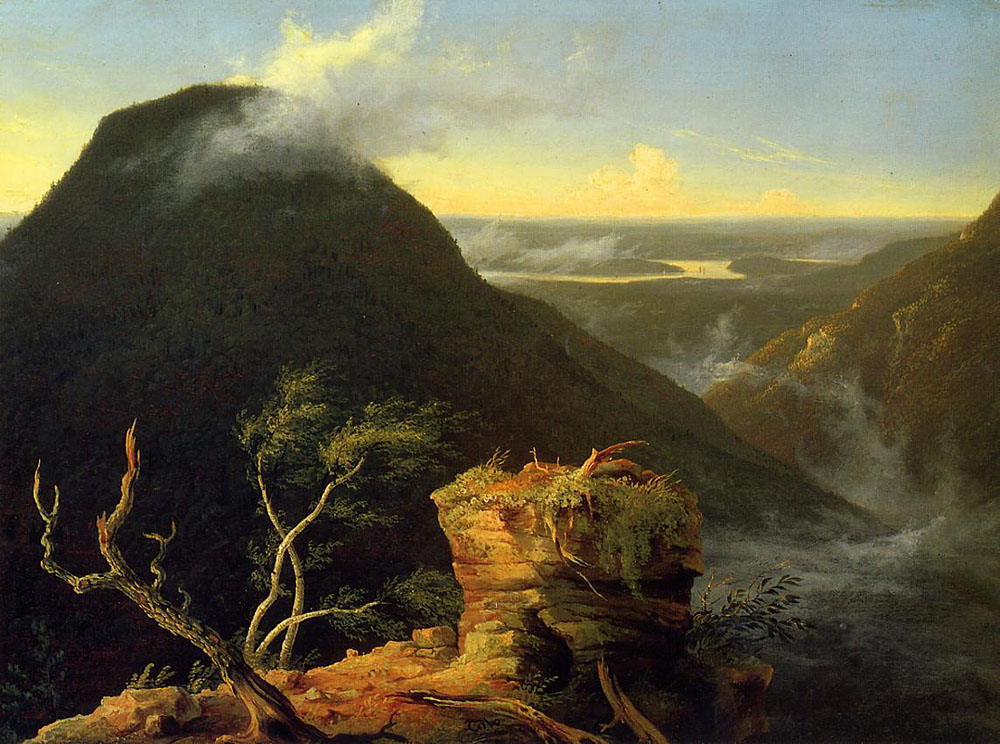Thomas Cole, Sunny Morning on the Hudson River, 1827
51.5 x 76 in.
Thomas Cole (1801-1848) was a major Anglo-American painter and the founder of the Hudson River School. Born in England, his family emigrated to the United States in 1818, settling in Steubenville, Ohio. Cole initially set out to be a portrait painter, having learned the rudiments of the craft from a wandering portrait painter named Stein. However he had little success with portraits and his focus shifted to landscape. Cole moved to Philadelphia where he practiced by copying works on view at the Pennsylvania Academy of Fine Arts. He soon moved to New York to join his parents and sister who had moved there. He then helped found the National Academy of Design in 1826. Cole drew on the European landscape tradition, but adapted it to the environment and character of the United States. He painted New England and the Hudson River Valley as one would the fields of Italy, creating a revolution in the American approach to landscape. Cole's work was highly romantic, and often included fantastical elements or entirely imagined landscapes. Among his most famous works are The Oxbow (1836) and his series of five paintings entitled The Course of Empire (The Savage State, The Arcadian State, The Consummation of Empire, Destruction, and Desolation). Sunny Morning on the Hudson River is a classic example of Cole's style. It features a romanticized sunrise over the mountains. One of the most interesting elements is the shapes created by the fog, clouds, and foliage. Blowing in the wind, they all stir and sway in similar ways to give the painting a deep sense of movement. The mountain, meanwhile, is the archetype of solidity. The river incorporates both sides of the spectrum, certain and constant, yet always flowing and moving. Cole successfully invokes these archetypes, but subtly, to create a painting of great interest and meaning. With his steady brushwork and command of color and light, the painting becomes very effective.

No comments:
Post a Comment